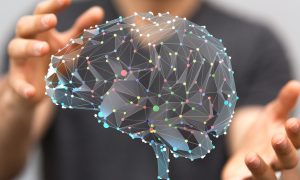It’s well known that anxiety disorders adversely affect the cardiopulmonary system. Heart rates can soar, causing palpitations, and blood pressure can rise.
Now a University of Bristol in the UK has shown that anxiety has another effect. Anxious people find it harder to identify facial expressions than those who don’t suffer from the disorder.
Marcus Munafò, a Bristol university professor, has told the Guardian how he wants to discover how anxiety affects the way we view the world. Munafò already acknowledges that anxiety can hinder cognitive function. His desire is to uncover how well the anxious mind is able to read emotions.
Twenty-one healthy volunteers took part in the Bristol University study. Each was fitted with an oro-nasal facemask and given either normal air or air enriched with 7.5% carbon dioxide. Those inhaling higher levels of carbon dioxide shortly began to experience heightened anxiety, as well as a faster heart rate.
The group was shown a series of 15 images of one individual, whose facial expression morphed through surprise, sadness, happiness, fear, disgust and finally anger. Volunteers had to assign a facial image to one of these six key emotions. This part of the study was repeated later with each volunteer inhaling the alternative gas they had received the first time.
For the second part of the study, 44 volunteers viewed 45 facial images of 15 individuals. Each image showed a facial expression depicting an emotion which lay somewhere between anger and happiness. Once again, each volunteer attempted to match the facial expression to an emotion.
The results of the study were published in the Royal Society Open Science journal. They showed that those breathing in elevated levels of carbon dioxide were 8% less likely to assign the correct facial image to an emotion. They were also more likely to see facial images as showing anger than happiness. To recap, the more carbon dioxide inhaled, the greater the anxiety, the poorer the facial emotion recognition.
Finally, the final part of the study expanded the group to 1,994 individuals. This was an online study with men and women of four different ethnicities asked to take part. The group was asked to study pictures of both male and female faces, of assorted ethnicities, and assign an emotion to each face. Afterwards, they each filled in a questionnaire reporting on their own current and general levels of anxiety.
The results were found to be consistent with those from the first two parts of the study. Those in heightened states of anxiety were less able to correctly recognize facial emotions. Even for specific emotions, the results proved consistent.
It had also been suggested previously that anxiety makes people more aware of others’ fearful expressions. The Bristol team though found no evidence to support this theory.
Reference
State anxiety and emotional face recognition in healthy volunteers
Angela S. Attwood, Kayleigh E. Easey, Michael N. Dalili, Andrew L.
Skinner, Andy Woods, Lana Crick, Elizabeth Ilett, Ian S. Penton-Voak,
Marcus R. Munafò
Royal Society Open Science Published 31 May 2017.DOI:
10.1098/rsos.160855






